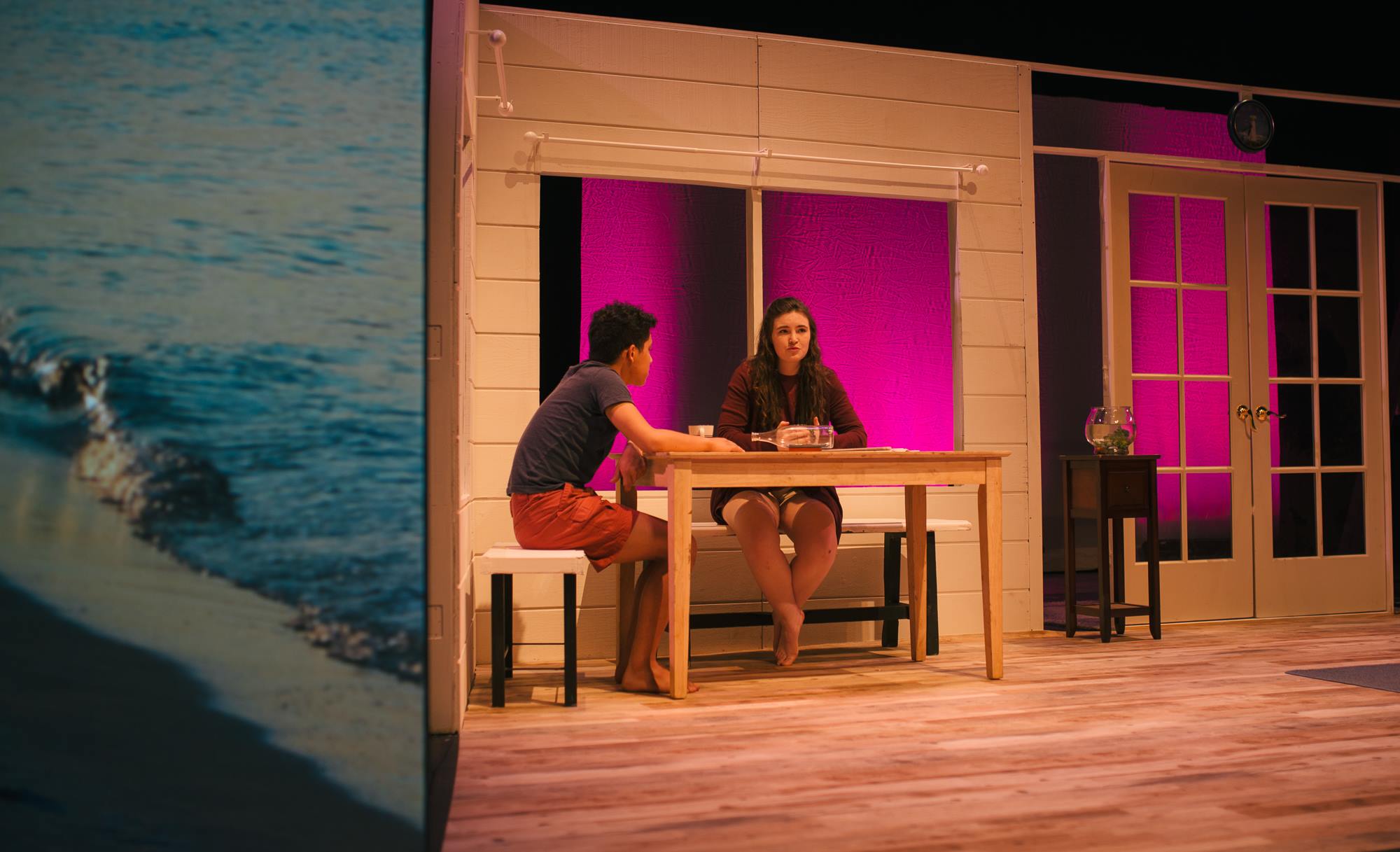
Yale Dramatic Association
As the set of “Prelude to Everything Else” remains static, the music, dance, and video throughout the play remove the confines of the walls and pull the audience through genres and time.
This diverse and challenging collection of scenes comes from the mind of Brian Orozco ’18. With director Jacob Rodriguez ’18 and producer Michelle Lapadula ’18, he portrays the tense and tender relationship of a mother and her teenage son, both dealing with the loss of loved ones.
Orozco is no stranger to crafting nuanced art pieces. In 2016, Orozco’s exhibit, “[An] [art] [show],” debuted in the Ezra Stiles Art Gallery. In an interview with Down Magazine, he described the show as being “about how much I can get away with.”
That sentiment seems to resurface in his play. On top of his simple portrait of mother and son, Orozco adds musical interludes, a quartet of dancers and video flashbacks that imbue the work with multidimensionality. While the two main characters are known only as Mom (Emma Healy ’18) and Son (Tarek Ziad ’20), the show does not hold back from expressing the dynamic and complex lives encapsulated within these basic names.
The first dialogue doesn’t take place until fifteen minutes into the show. Son and Mom deliver consecutive monologues to open the play; Son describes Mom, who describes her dad. Their reflections on the past set the tone for the rest of the play. Much of the conversations between Son and Mom revolve around the exchange of memories. They occasionally reference their childhoods, but the real past that pervades their thoughts are those of their romantic lives.
Son and Mom’s losses linger throughout the play. As they tease out information about their pasts through anecdotes, other emotional elements of the play compliment the relatively reserved dialogue.
Two projectors display videos on either side of the stage. These help construct the setting of the play’s present by supplying shots of the beach, but they also contribute to setting up the play’s past. They often run scenes between Mom and Son’s dad. Sometimes these flashbacks come to life as Mom relates the memories of her relationship aloud. At other times these flashbacks play amid silent interactions between Mom and Son. For example, we see images of the two playing marbles in darkness on stage, flanked by video of Mom doing the same with Son’s dad.
Quiet actions abound in the play. Son shows Josefina, his former lover, the marks on the wall charting the progress of his height. Son and Josefina brush their teeth. Son prays in bed.
Music also has a consistent presence throughout the story. Often, four dancers take to the stage as the music starts playing. In one instance, a lone French horn player delivers a short performance before directing a question at the audience.
The music, which makes the play come across as slightly eclectic, covers a wide range itself. In addition to the French horn, the play contains pieces on the piano, ukulele, and cello.
These instrumental musings add poignancy to the play. As Mom and Son struggle to reconcile their pain and heal that of the other, the music captures a feeling their words can’t.
The set, featuring a goldfish bowl and a house which Mom and Son’s dad built to include as many windows as possible, contribute to an interesting theme of isolation and entrapment. Healy and Ziad portray a moving image of mother and son suffering next to, yet independently of, each other.
Yet the strongest moments of the play come when Mom and Son break from reveries of the past and give voice to these feelings of separation. In these moments, the present reasserts itself over the past; in these moments, the love Mom and Son share reasserts itself over their lost loves.
Tommy Martin | tommy.martin@yale.edu







